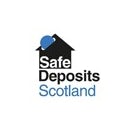I was talking to a landlord recently about the changes in the pension regulations and its quite possible that in the fairly short term we could see one of the greatest ever surges in the buy to let investment market, as more and more people are viewing property as a viable way to provide financial security in retirement.
The Government’s well-publicised pension reforms will give savers unprecedented access to their ‘nest eggs’ and the freedom to seek out alternatives to conventional pension plans, such as annuities and income drawdown.
In addition, rising or stable residential property prices in some parts of the country are providing potential for attractive ‘yields’ from buy to let and national.
By investing in property, pension savers can not only avoid significant fund fees or commissions but, by making all the right decisions, they can secure income and growth from tangible ’bricks and mortar’ assets over the longer term.
Savings invested in property can provide a regular income in the form of rent. Properties in an investor’s portfolio should also retain value for when the time comes to sell.
Generally, new buy to let investors can benefit from two different investment strategies – either looking to achieve relatively small rental returns in an area which has large capital growth or, alternatively, investment in areas and properties known to produce a high income.
But in both instances, ‘rental yields’ derived from investment in rental property are crucial to measuring success and need to be fully understood and properly calculated.
Rental yields come in two forms – gross and net – and whilst neither can be 100 per cent accurate, they still provide the best possible barometer of success for investment landlords.
In this current economic climate, buy to let investors have the potential to achieve much higher returns than by putting their funds into a traditional bank account with very low interest rates. Whilst I am not in a position to offer financial advice, I can share my knowledge and experience of the local property market. I also work very closely with regulated financial advisors and wealth management experts who can be called upon for specific guidance on aspects of tax and financial planning if needed.
In this following brief guide, I lay out the simple steps a buy to let investor needs to take to work out potential ‘yields’.
What is a Gross Rental Yield?
This is the expected annual rental income of a property expressed as a percentage of the total property value.
Whilst not being wholly accurate in terms of what you receive, it can provide a good yardstick for comparison and increases the likelihood of a successful venture.
How is it calculated?
Firstly, establish a probable monthly rent – this can be done by looking at similar properties in the area. If you’re unsure, ask me. From this, calculate the likely yearly rent – just multiply the monthly rent x 11 (I always say eleven rather than the 12 that some agents will tell you as its wise to assume 1 month void). Next, divide the yearly rent figure by the purchase price of the property. And finally, multiply this by 100 to get a percentage. This is the Gross Rental Yield.
Once you’ve calculated the gross yield look at how this figure compares with other property averages – both locally and nationally.
I advise all landlords to conduct gross rental yield calculations on a variety of properties before making a purchase.
The first property you see may be the one that tempts you into the sector but it may not always be the best investment. Buy-to-let can be very profitable but only if researched thoroughly and treated like any other business opportunity. Remember you are not buying a home for yourself, buy with your head…. Not your heart.
What is the Net Rental Yield ?
This is a calculation of the total rent received minus the expenses that the property incurs expressed as a percentage of the total property value.
If your expense costs are accurate this is a very easy way to monitor the profitability of your purchase.
How is it calculated?
Firstly, take the monthly rental amount, which will be listed in the tenancy agreement for the property.
Next, multiply this by 11 to establish a yearly income. Add together the yearly outgoing costs – e.g. insurance premiums, replacement of fixtures and fittings, periodical property redecoration, maintenance, ground rent (if the property is leasehold) and the lettings agency costs, etc. Then, subtract the total outgoings from the yearly income to determine the net income. Lastly, divide your net income by the total property value and multiply this by 100 to get a percentage figure.
This is the Net Rental Yield – the return on your investment.
And finally…
Once the net rental yield is established the investor needs to compare it with any initial target or expectations set – and discuss the outcome with an expert.
I always strive to achieve the best returns for my landlords in Dundee and surrounding area and am happy to offer advice on how to maximize yields.
To see similar articles or information about possible buy to let properties just follow this link to the The Dundee Property Blog
Or If anyone wants to discuss the above or any other points regarding lettings in the Dundee area then please don’t hesitate to contact me at nick.horan@belvoirlettings.com.








